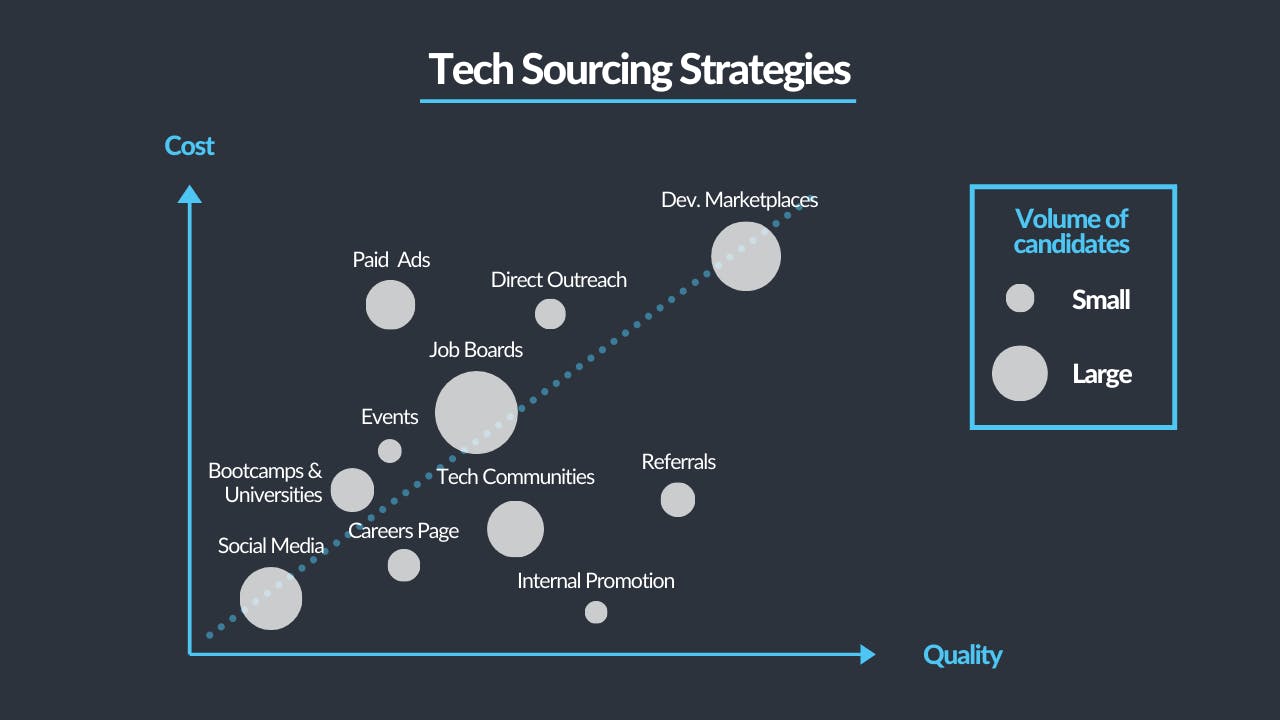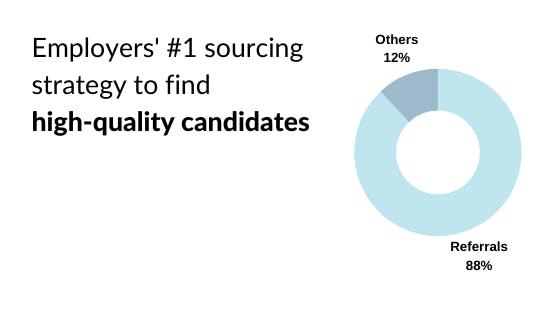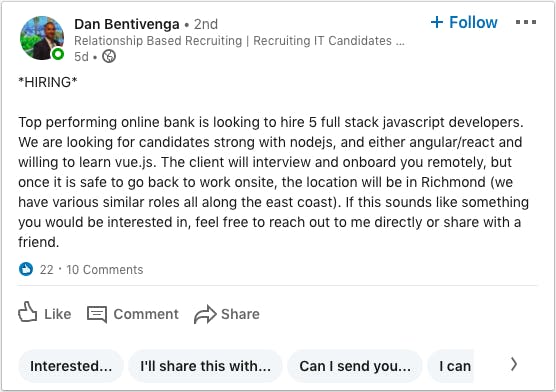Technical recruitment is a sourcing problem.
Though simple, it took me longer than I care to admit to understand this.
In most other industries, recruitment is a different problem. It's a filtering problem. Companies post jobs, candidates apply and recruiters find the most promising ones.
In those cases, there are usually a lot of (inbound) candidates. Some of them would likely be a good fit for the job. It's the recruiter's job to identify which ones.
Technical recruitment is different. Posting a job is not enough to get qualified candidates. Simply put, there are more jobs than qualified candidates.
Supply and demand.
This is why many internal recruiters can hire for almost any role except software development. It requires a different skillset.
So, how do you find candidates for software development roles?
I have been trying to answer this question myself for the past few years. In this article, I try to summarize what has worked out best for us so far.
12 Sourcing Strategies
Technical recruitment is not too different from sales. In both, it's your job to find people who would benefit from what you have to offer.
Just like in sales, there are two sets of strategies we can use to get candidates: inbound and outbound strategies
Inbound strategies are those where you make candidates come to you. Outbound strategies are those where you’re reaching out to candidates.
You should always start by the inbound strategies. They may not be enough, but once they're set in place, they’re passively collecting candidates.

Here’s a quick overview of the most effective strategies we've used:
1. Internal Promotion
Volume: 1/5 | Cost: 1/5 | Quality: 4/5
The first thing to consider is promoting someone who’s already on your team.
Perhaps there is someone who’s slightly more junior but responsible, whom you could trust. Alternatively, you can reshuffle the tasks of a member of your current team, or ask those working part-time to increase their amount of hours.
This option is probably the easiest to implement. There are many benefits in promoting from within, as suggested by Deborah Sweeney, among which boosting employee’s morale and reducing the risk of misfit.
2. Referral Programs
Volume: 2/5 | Cost: 2/5 | Quality: 4/5
Guess who knows software developers? Other software developers.
Despite referral programs being without a doubt one of the most effective strategies, most companies just skip them entirely. Take advantage of the network of the people in your development team to recommend great candidates for the position.
It’s a common practice to offer a bonus (ranging from 500 to 2.000€) to the referrer if the referred candidate ends up being hired.

If you're interested in implementing this strategy effectively, check out our in-depth guide to hiring from your own network.
Alternatively, you can follow a more intensive network mining strategy as suggested by Peter Kazanjy, co-founder of TalentBin.
3. Careers Page
Volume: 2/5 | Cost: 2/5 | Quality: 2/5
This step assumes you have a well-defined job post that you can publish on your website. If you haven’t yet, check this article for a quick reference.

This strategy can be particularly effective if you have a strong employer brand or have large traffic on your website.
There are three important rules about building an effective Careers Page:
- Make it noticeable from your Home page
- Post jobs that are appealing to candidates
- Keep the application form short
Following these rules ensures that potential candidates who visit your website can easily see that you're hiring, check the open roles and submit an application.
4. Job Boards
Volume: 5/5 | Cost: 3/5 | Quality: 3/5
Job boards are still a great way to find active candidates. From our experience, two job boards work better than most others: LinkedIn and WeWorkRemotely.
LinkedIn uses a Cost-Per-Click model, with each click costing roughly $1 - $1.5 (this may vary based on job specs and target audience). WeWorkRemotely currently charges a one-time fee of $299 for a single job post valid for 30 days.
That said, it’s always worth posting your job on free high-traffic job boards, namely Indeed, Glassdoor and AngelList.
5. Tech Communities
Volume: 2/5 | Cost: 1/5 | Quality: 3/5
Tech communities are one of the strongest sourcing channels for remote jobs. Even if the total number of people who view your job post may be low, it’s highly targeted traffic.
Search for the community that is most related to your job. For example, if you’re looking for a Python developer, the PySlackers community would be an appropriate workspace. Here’s a list of 156 developer communities to get you started.
Some communities are always worth posting in. Reddit, Dev (paid) and Hashnode are great examples of communities that will generate a nice flow of candidates.

When posting on these communities, try to make it as appealing as possible. Share a headline and a short summary with the link for candidates to apply.
6. Social Media
Volume: 3/5 | Cost: 1/5 | Quality: 1/5
Posting on social media is another easy way to reach out to people looking for jobs. Facebook and LinkedIn are ideal for this purpose. That said, you should expect to be flooded by messages from outsourcing agencies and candidates who may not be a great fit if you post on LinkedIn.

The main problem with social media posting is that you get a high volume of candidates but few qualified ones. This strategy is most useful if used together with an automated screening test (coding assessment for example).
7. Paid Ads
Volume: 3/5 | Cost: 4/5 | Quality: 3/5
There are many paid ads channels but our experience suggests that the most effective when searching for remote developers is Facebook Ads.
Facebook’s service allows for a very customized campaign that enables employers to focus on specific age, location, interests and languages. It can be a good source of potential candidates, particularly if the company’s Facebook page includes comprehensive information about the company.
Outbound Strategies
8. Developer Marketplaces
Volume: 4/5 | Cost: 5/5 | Quality: 5/5
A faster way of starting to work with vetted developers immediately is to go through developer marketplaces. Many options exist for this, here are some of the most relevant:
- Toptal: Top 3% Freelance Talent, Premium Pricing.
- Upwork: Self-service Talent Pool, Competitive Pricing.
- Remote Crew: Vetted Talent Pool, Competitive Pricing.
Using external providers can be more costly, but you get talented developers who are typically ready to start working on a much shorter notice.
Typically, this option is well worth it if you need strong technical talent ready to start working within a relatively short period.
9. Direct Outreach
Volume: 2/5 | Cost: 4/5 | Quality: 4/5
Sometimes, if the other strategies don’t yield results quickly enough, it may be necessary to get in direct contact with the best candidates.
We’ve used LinkedIn, Github and StackOverflow for this. Upgrading your LinkedIn subscription to LinkedIn Premium or LinkedIn Recruiter is definitely worth the money, as it allows you to reach a large number of people quickly and easily, while filtering by skills and location.
This should go without saying but when reaching out to developers individually, make sure to personalise the message. The worst thing for developers is receiving a message for a JavaScript job when they’re experts in Java.
10. Events
Volume: 2/5 | Cost: 4/5 | Quality: 2/5
There are plenty of tech events happening nowadays, both offline and virtual. These events can be a great way to find people who are interested in the specific tech stack you’re hiring for.
Search Meetup and Eventbrite for events your target candidate would be interested in. On Meetup you can also check the participants’ profiles. Many members include links for their Facebook or LinkedIn profiles which you can then use to reach out to them.
This strategy takes its time and is dependent on the tech ecosystem around you, but it can be a good alternative if qualified candidates are scarce.
11. Universities
Volume: 2/5 | Cost: 2/5 | Quality: 2/5
This option may be best suited if you're sourcing for junior roles. Every year, there are plenty of finalist students that are looking for a job. If you target the right degrees and are willing to wait for a few months before they're at full productivity, students may be a great option.
When hiring students, motivation and eagerness to learn are at least as important as technical skills (if not more).
12. Bootcamps
Volume: 2/5 | Cost: 2/5 | Quality: 2/5
The large demand of tech talent fueled private bootcamps that consist of intensive coding programs lasting anywhere between 1-6 months. The best technical bootcamps we've seen so far are Ironhack and Le Wagon, though these may vary per region.
We've found that great candidates can come from these bootcamps, particularly if they had previous work experience in other industries. Still, it's safe to assume these candidates typically require a little bit more support from the team initially.
Conclusion
These are some of the best channels for quickly finding remote software developers. Take advantage of this list to jump start your tech recruitment process.
Tech hiring insights in your inbox
From engineers to engineers: helping founders and engineering leaders hire technical talent.
We will only ever send you relevant content. Unsubscribe anytime.





